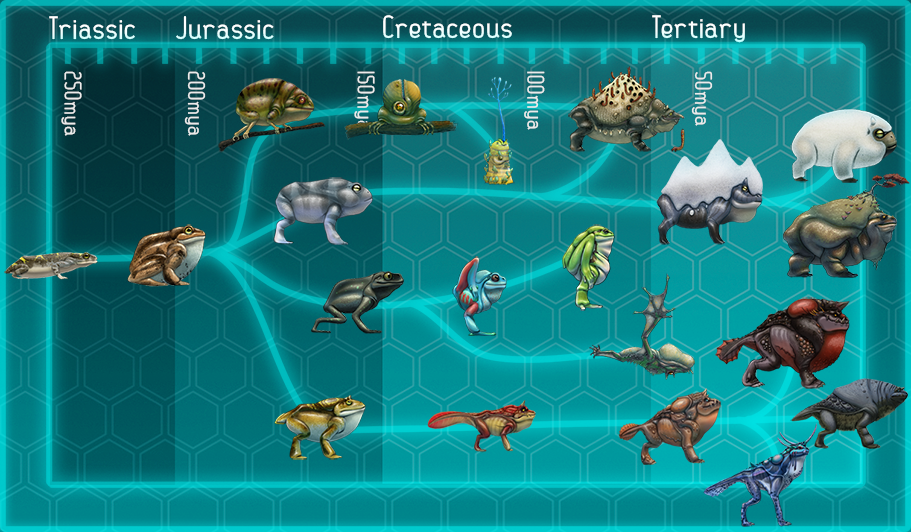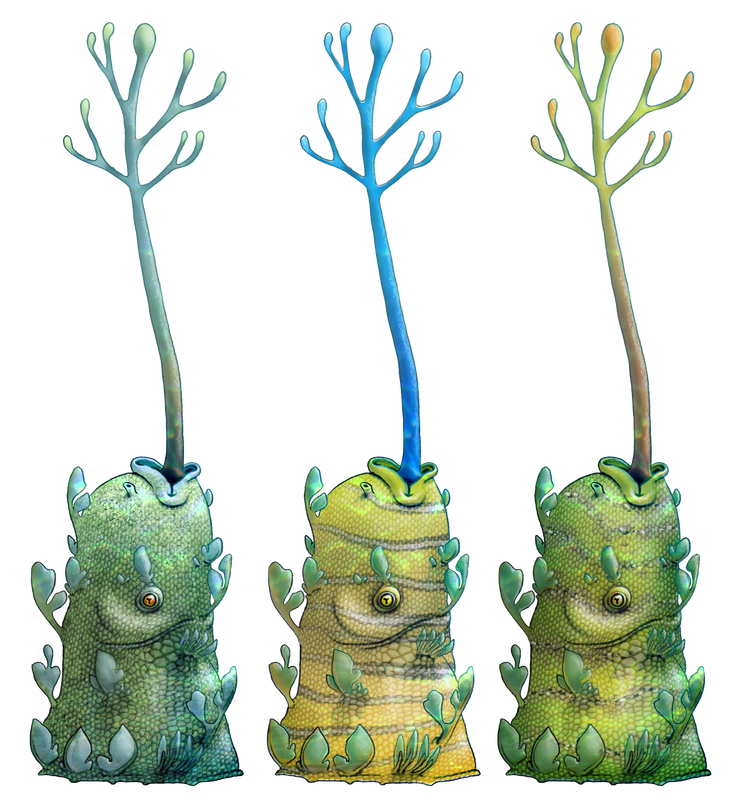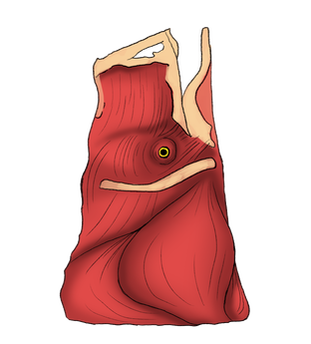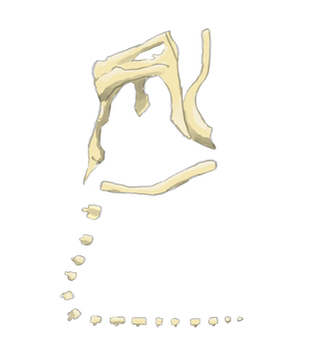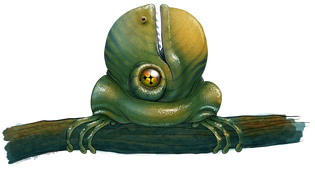|
The tropical frondle represents a unique case of a vertebrate approximating the life of a sea anemone, and abandoning many hallmarks of vertebrate life. The frondle’s tadpoles are free swimming, and live a traditional life, until it is time to mature, at which point, it seeks a spot to call its own, forever. The suckerlump attaches itself to a rock or submerged log, adhering itself in place. The tadpole never develops limbs, instead cementing itself to its spot with the remains of its tail, creating a sealed vacuum between itself and the surface. The eyes film over with skin, leaving it only able to tell the difference between light and dark. Its bones atrophy and disconnect, leaving only vestigial pieces, and, most shockingly, like our timeline’s sea squirt, the frondle mostly digests its own brain, repurposing its valuable fats and proteins at the expense of cognitive function.
To feed, the frondle extends its most characteristic feature, a highly derived tongue that branches out, extending tiny, sticky filaments to trawl the water with. The currents bring the frondle its food, planktonic organisms and any other organic detritus that may get caught in its ‘frond’. When sufficiently loaded, the frond retracts into the frondle’s body, taking with it the collected matter to be digested. Frondles reproduce asexually, meaning each offspring is an identical clone of its mother, and are neotenous in that they never lose their tadpole-stage gills, letting them live truly aquatic lifestyles. |
EVOLVES FROM:
